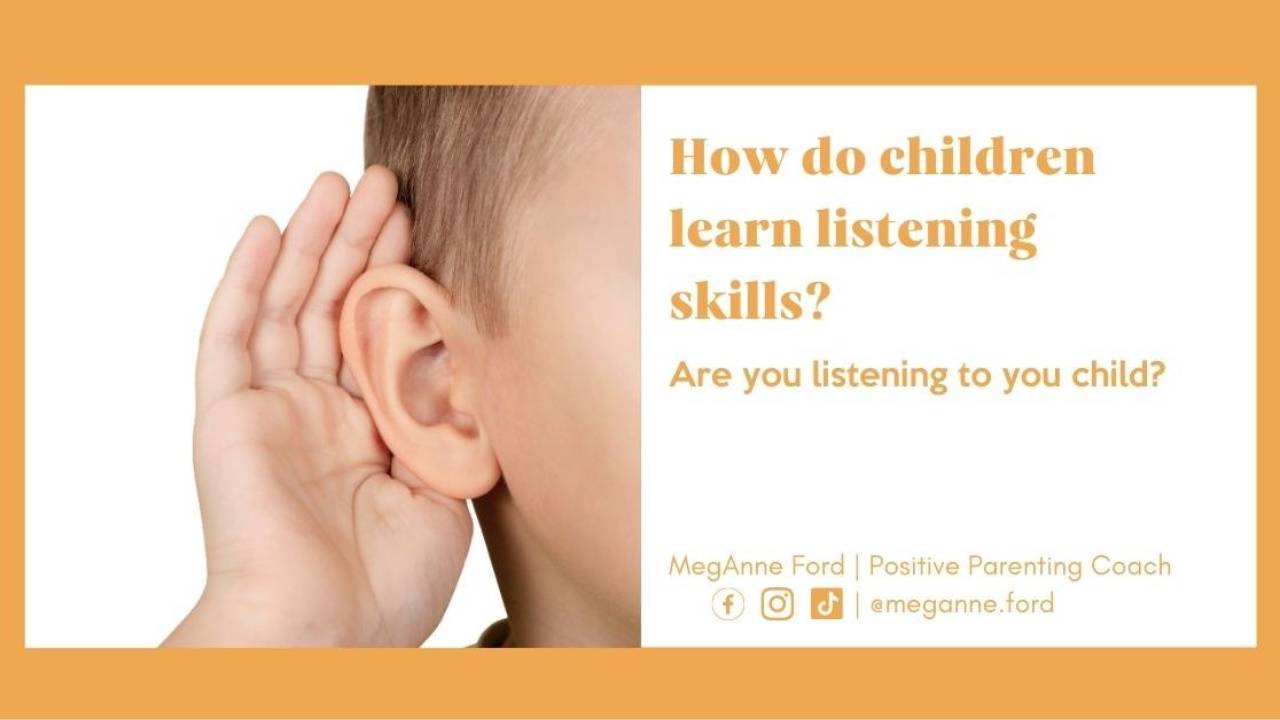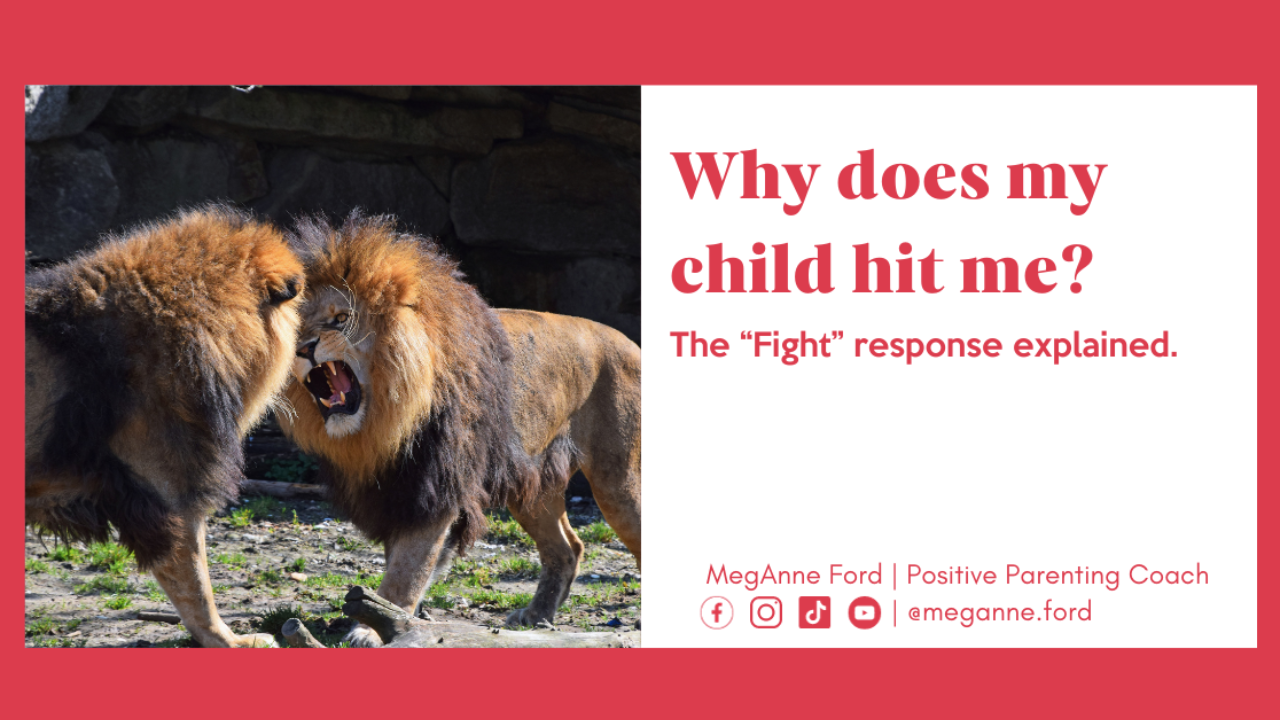
What does a “FIGHT” response look like?
Oct 26, 2023
You can WATCH or LISTEN to this content
What does the ‘Fight’ trauma response look like? When is it adaptive and maladaptive?
Disclaimer: I invite you to take care of yourself while you read. This content can be triggering, so take a break if needed. This information is for awareness and entertainment and not to be a substitute for professional mental help.
I am a parenting coach. I work with parents to help them build and maintain parenting tools that work inside their home.
The more we know as adults, the more empowered we can be in stressful situations with the little ones in our care.
Takeaways
- The fight trauma response is about our brains trying to protect us, but sometimes it can get mixed up, causing us to see threats where there aren't any.
- Understanding that someone behaving like a "bully" might be in a fight response due to stress helps us approach the situation with empathy and support instead of confrontation.
- The fight response can lead to behaviors like verbal or physical aggression, and it's crucial to remember that these actions are not driven by malice but by stress and perceived threats.
The information below builds on the knowledge of what behavior is communicating, and how we interpret someone's behavior affects how we show up and do our P.A.R.T.
Our brains are pretty amazing.
When we sense danger, our brains quickly react to keep us safe. These reactions are like our brain's superpower, helping us adapt to different situations.
But sometimes, these reactions can get a bit mixed up, and we start seeing threats where there aren't any.
For example, think of it like this: if you saw a tiger, you'd want to protect yourself and stay safe, right? But what if that "tiger" was just a friendly house cat? Sometimes, our brain's reactions can be a little too quick, and that's when things can get complicated.
Overview of trauma response

Our nervous system has four ways to respond to threats, like the fight, flight, freeze, and fawn responses.
There's a cool flow chart that helps us understand this.
When our brain asks,
"Can I escape?" and the answer is "yes," we go into a flight response – it's like getting ready to run away from the danger.
If we can't escape, we ask, "Can I overpower it?" If the answer is "yes," we shift into a fight response, where we try to face the threat head-on.
But if neither escape nor overpowering is an option, we ask;
"Will it lose interest in us?" If it might lose interest, we enter a freeze mode, like playing dead to make the threat go away.
And if none of these work, our default response is the fawn collapse, which is our brain's way of trying to keep us safe.
These responses happen without us even thinking about them. Our brains are super smart, especially the downstairs brain, which is all about keeping us physically safe.
After physical safety comes emotional safety, where our midbrain helps us feel loved and cared for, finally, we get into our executive brain, the green brain, where we can learn and understand things better.
All this happens without us choosing it, especially in stressful situations. Our bodies show signs of stress, too, like our pupils dilating to take in more light, our hearing getting sharper, our hearts racing, and our muscles tensing up. It's like our bodies are getting ready for survival, and our brains reduce our pain perceptions so we can focus on staying alive.
So, our bodies are pretty amazing at keeping us safe, and understanding these responses can help us handle tough situations better.
It's all about feeling safe, loved, and ready to learn – just like how parents can be our safe caregivers and help us when we're stressed.
These automatic responses are fascinating and play a big role in how we deal with different challenges, even if we don't realize it.
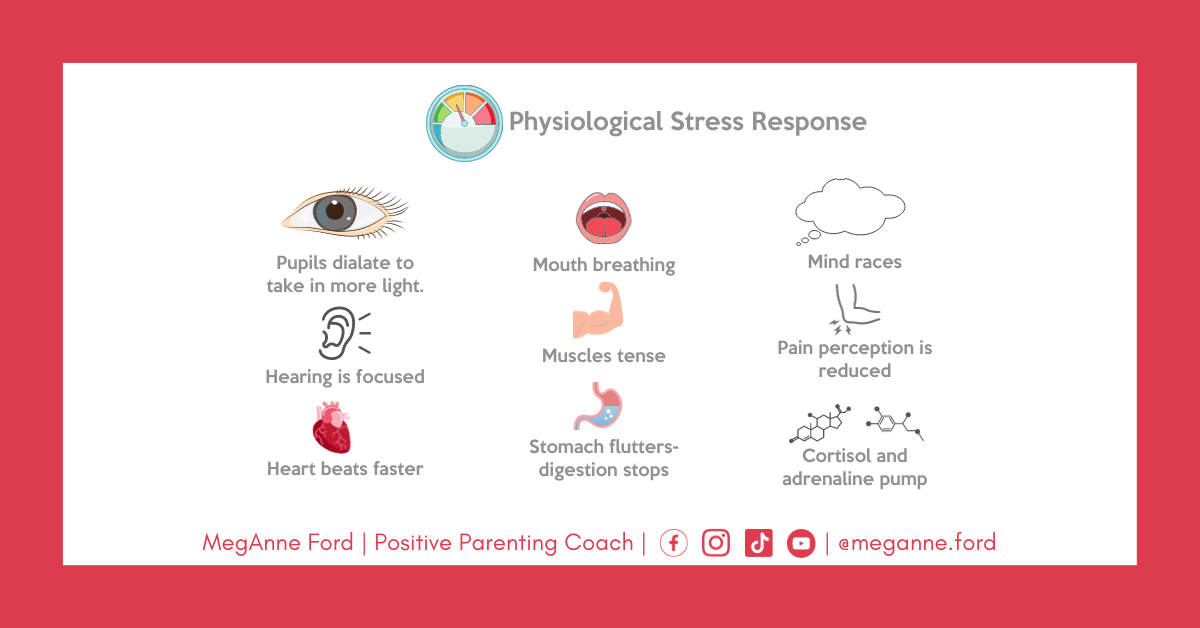
The Fight Trauma Response
The fight response is when our brain says, "I can overpower that threat!" It's like our superhero mode, where we feel we can fight anything that comes our way. This response helps us take control and keep ourselves safe.
It's like puffing up your chest and saying, "I've got this!"
When we use the fight response adaptively, it's a powerful tool to establish safety and security. Imagine facing a real threat like a wild animal. Our fight response can kick in, and we become fearless warriors ready to protect ourselves.
However, it's not always about wild animals. Sometimes, we misinterpret non-life-threatening situations, and this is when our fight response can become maladaptive.
If we're always on guard, hyper-vigilant, or easily provoked, our fight response might be running the show. We can become quick to anger, defensive, and even aggressive with others. It's like we're ready to unleash our ninja chop at the smallest hint of a threat.
Understanding our fight response and when it's helpful or not can make a big difference in how we handle situations.
What the fight response looks like
When we're dealing with the fight response, it's important to understand that this behavior is like a message from our brain, saying, "I'm feeling stressed and threatened."
When in the fight response, someone may act out or appear misbehaving, which is their way of expressing their stress.
It might look like talking back to authority figures, trying to dominate people, being controlling, or always needing to have the last word.
They could have explosive tempers, stomp around, slam doors, and make big, loud expressions of anger.
People around them might label them as bossy or even a bully.
It's crucial to remember that this behavior isn't just about disobedience or being defiant. It's a signal that they're dealing with some form of threat and stress.
When we recognize this, we can offer them support and help them cope with their stress rather than seeing them as troublemakers.
In a way, their behavior is like their own kind of language, speaking volumes about their emotional state.
Instead of reacting negatively to their actions, we can try to understand the message they're sending and find ways to help them manage their stress more effectively.
‘Bullies’ Misunderstood
When I used to run Kind Club in schools, it aimed to provide tools for those who might be considered bullies.
It's essential to realize that bullies don't actually want to be bullies.
Many anti-bullying campaigns, in my opinion, miss the mark because they try to fight fire with fire, attempting to make the bully be nice through force.
But let me tell you, that approach doesn't work. When someone behaves like a bully, it's often because they've been pushed into a fight response.
They perceive a threat and are overwhelmed with stress. These are the moments when they need tools and support, not more punishment. It's like a white flag signaling, "I'm overwhelmed, and I need help."
This understanding isn't limited to kids in schools.
It applies to adults and other people in our lives as well. When they engage in behavior that might seem like bullying, it's a sign that something is causing them stress. They're interpreting a threat and need support.
Knowing this allows us to approach the situation with empathy and offer our toolbox of support rather than responding with confrontation.
Fight Response - Excusing, Yelling, Hitting, Biting
For someone who's in a fight response, their behavior might involve avoiding accountability.
They start missing appointments, making excuses, and avoiding things as a way to protect themselves from perceived threats. They handle problems on their own and often blame others for their own poor behavior.
A fight response can also manifest as verbal aggression, such as yelling, screaming, or using mean words like saying, "I hate you."
It's important to understand that they're not doing this out of joy but because they're feeling stressed and interpreting threats.
Physical aggression can also be a part of the fight response, including hitting, biting, kicking, or throwing things.
These actions are driven by the need to protect themselves from perceived threats.
People with a fight response may insist on always being right or having the correct answer, often avoiding situations where they might be wrong. Admitting their mistakes becomes challenging for them. These behaviors may lead to labels like Oppositional or Defiant, but it's crucial to remember that these actions stem from a place of stress and perceived threats, whether real or perceived.
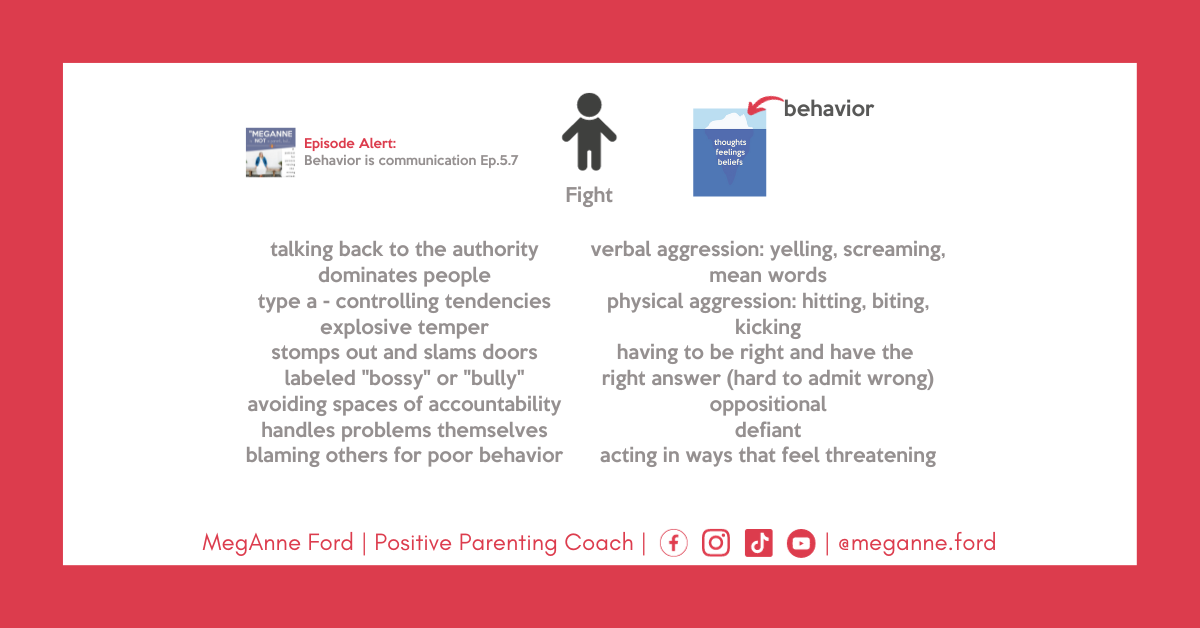
Need to Remember:
It's important to understand that when someone is acting out or behaving in challenging ways, they're not doing it to give you a hard time.
Instead, they are going through a tough time, struggling with their feelings and reactions.
This is a crucial moment for you as a parent or caregiver to step in and make a positive difference. You can be there, be present, tune in to their emotions, connect with them, and build trust. This is when you can use your tools to support them.
If you'd like to learn more about how to do your part in these situations, I recommend checking out episode 5.6, "Are You Listening to Your Child?" In that episode, we explore how to fulfill your role in supporting your child.
Failing to do your P.A.R.T. can damage the trust between you and your child.
Often, when someone behaves aggressively or threateningly, our natural response is to go into a defensive mode. But there's an opportunity for you, the adult, to help regulate yourselves and the child in these moments rather than escalating the situation.
What do I do when my child wants to hit me?
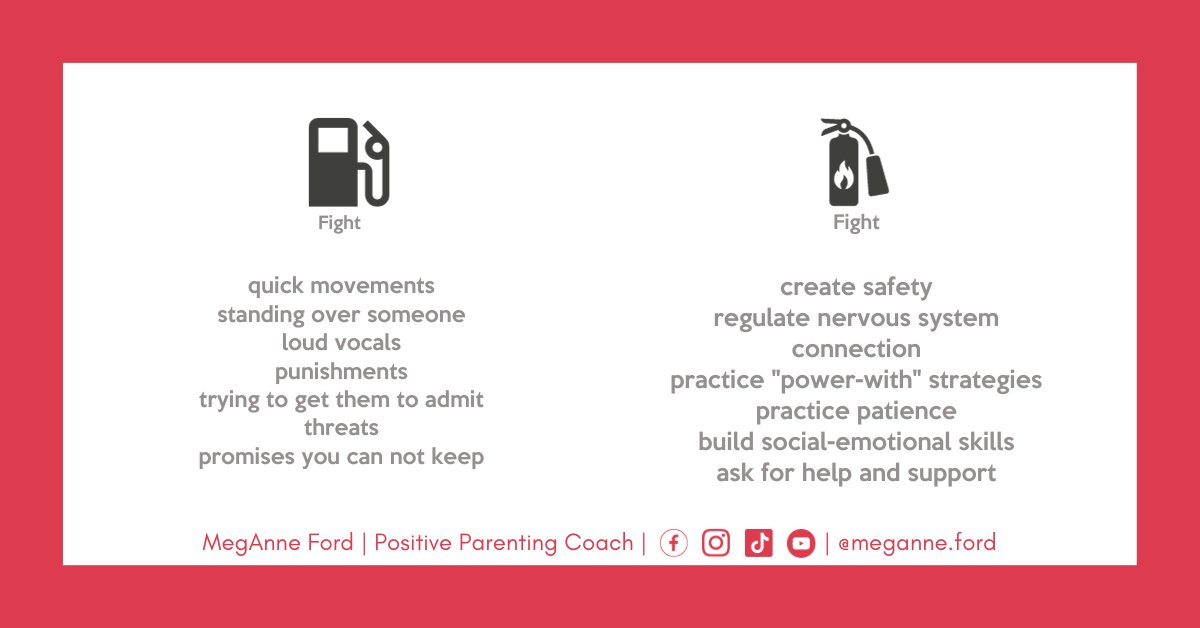
In moments when someone is in a stressful state, certain actions can act like gasoline, making the situation even more intense.
Quick, abrupt movements can escalate their response, so it's essential to move slowly and gently.
Stand on or below eye level with the person who's struggling to avoid making them feel threatened, as someone towering over them can add to their stress.
When trying to help, avoid punishments and threats, as these actions can increase their defensiveness and not help them calm down.
Instead, you can act as an extinguisher to de-escalate the situation.
Begin by creating physical and emotional safety by removing potential hazards and regulating your tone, posture, and behavior.
Offering support, validation, and understanding can help them feel heard and ease their stress. Implementing power-with strategies and practicing patience can create a more collaborative and calming environment.
If you find it challenging to be an extinguisher and feel overwhelmed, you are not alone in feeling this. Maybe you were not modeled how to be the extinguisher?
I know that I wasn’t, and how I came to create the C.L.E.A.R. Method to help families navigate the normal stressful moments of life.
You can start today with the Understanding Us Series. An email series that will help you understand where you are at in your parenting journey.
Don't wait to seek help and support to improve your skills in handling stressful situations.
Understanding these responses can help us better support those in times of stress, as many misbehaviors are not driven by bad intentions but rather a cry for help or understanding.
Questions to Consider:
When do you notice signs of stress?
When do you notice signs of safety?
What habits support your sense of safety?
What habits support your sense of stress?







